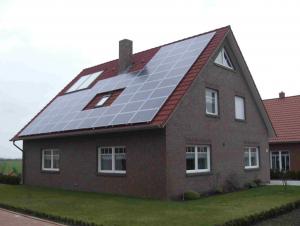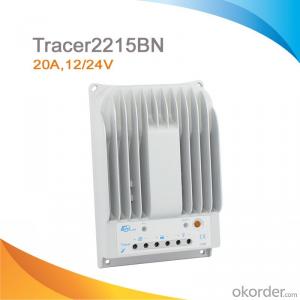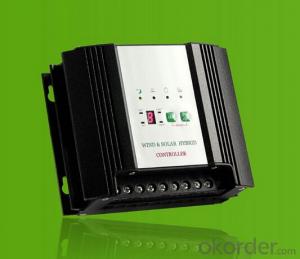Best Charge Controllers for Solar:DC 12V/24V/48V Auto Work 20A Solar MPPT Battery Charger Controller
- Loading Port:
- China main port
- Payment Terms:
- TT OR LC
- Min Order Qty:
- 20 unit
- Supply Capability:
- 9999 unit/month
OKorder Service Pledge
OKorder Financial Service
You Might Also Like
Smart2 20A Solar MPPT Battery Charger Controller
More Pictures
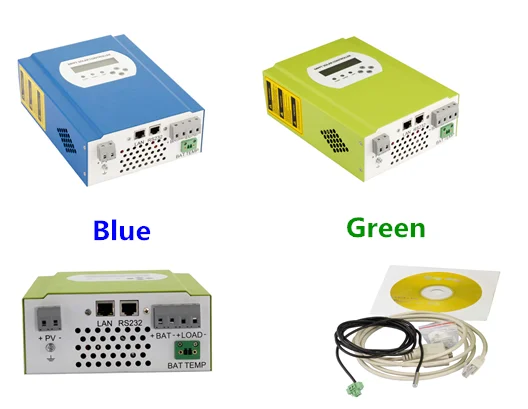
LAN/RS232 connecting
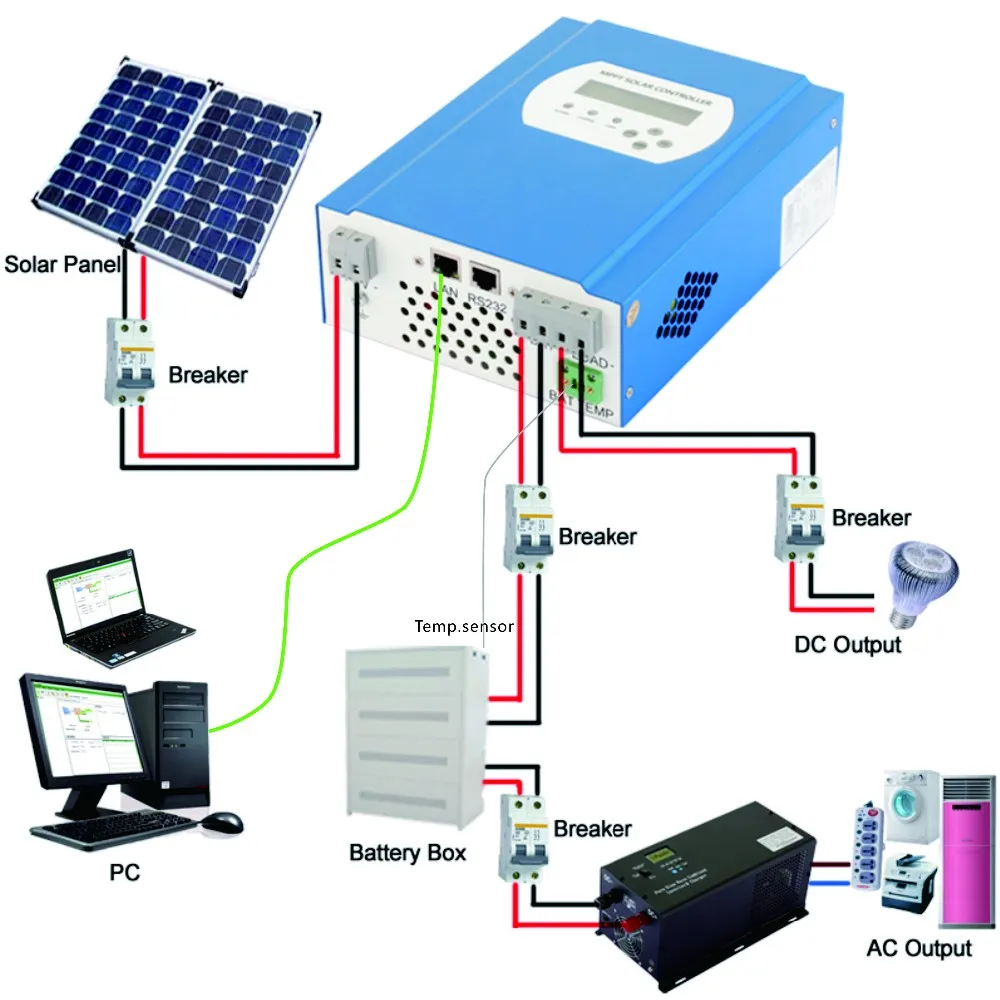
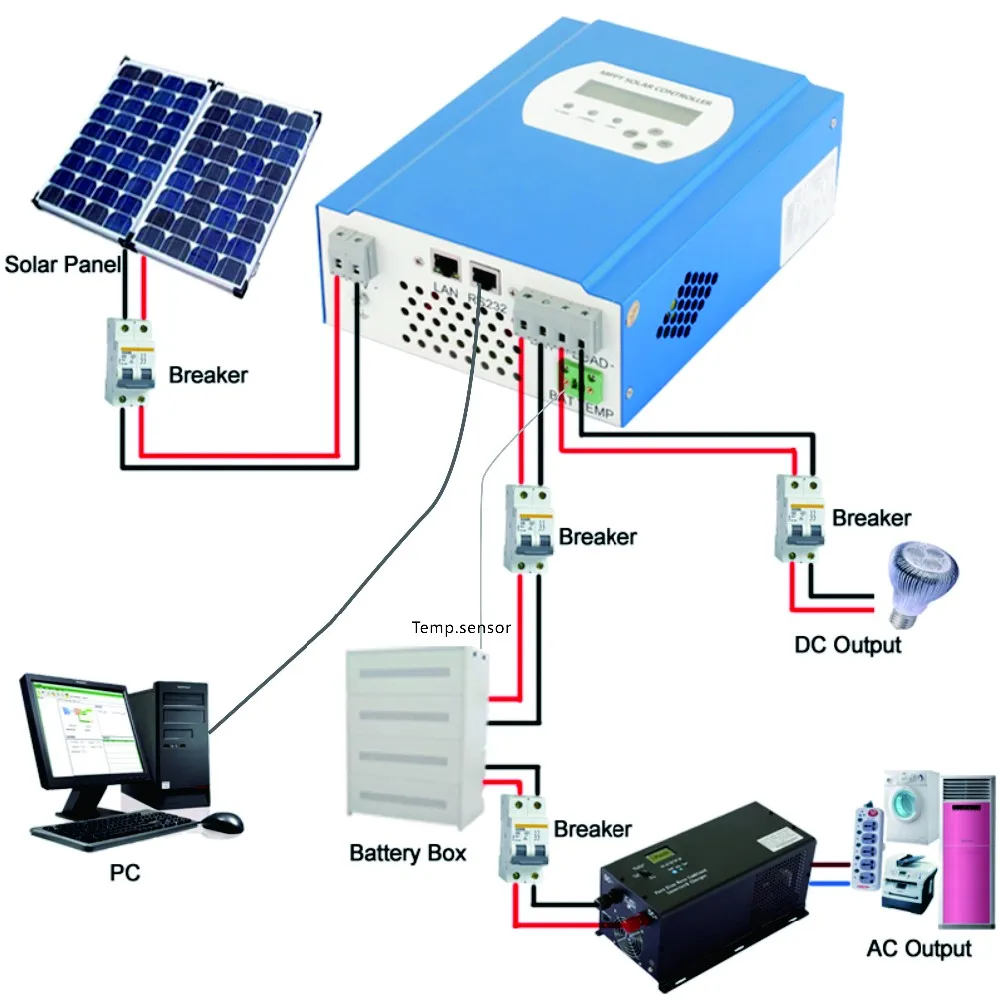
Upper PC software (real time monitor)
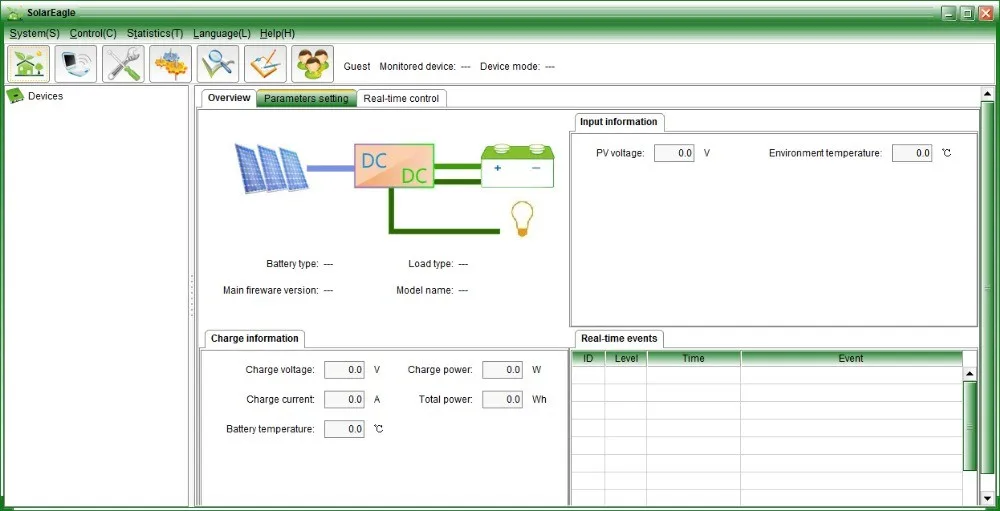
Application
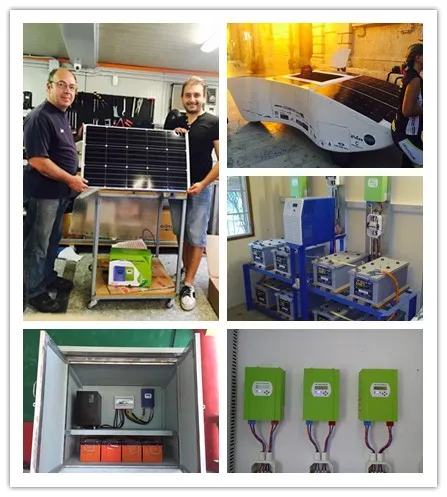
Feature
1. MPPT charging mode, conversion efficiency upto 99%
2. Maximum PV input voltage up to DC150V
3. RS232 and LAN communication port
4.Discharge mode: ON/OFF mode, double time control mode, PV voltage control mode, PV voltage+time delay mode.
5.LCD and LED show various parameters
6. Controllers can be connected in unlimited parallels
7. CE,RoHS, FCC certification approved
8. 2 years warranty, lifelong free technical service.
Parameter
| Model:I-P-SMART2-20A/25A/30A -series | 20A | 25A | 30A | ||
| Charge Mode | Maximum Power Point Tracking | ||||
| Method | 3 stages: fast charge(MPPT),constant voltage, floating charge | ||||
| System Type | DC12V/24V/48V | Automatic recognition | |||
| PV Modules Utilization Rate | 12V/24V/48Vsystem | ≥99% | |||
| Input Characteristics | |||||
| MPPT Working Voltage and Range | 12V system | DC18V~DC150V | |||
| 24V system | DC34~DC150V | ||||
| 48V system | DC65~DC150V | ||||
| Input Overvoltage Protection Point | 12V/24V/48V system | DC150V | |||
| Max. PV Power | 12V system | 286W | 357W | 429W | |
| 24V system | 572W | 715W | 858W | ||
| 48V system | 1144W | 1430W | 1716W | ||
| Output Characteristics | |||||
| Selectable Battery Types | 12V/24V/48Vsystem | Sealed lead acid, vented, Gel, NiCd battery | |||
| (Default type is GEL battery) | (Other types of the batteries also can be defined) | ||||
| Rated Output Current | 12V/24V/48V system | 20A | 25A | 30A | |
| Physical | |||||
| Pc (communication port) | RS232 or LAN | ||||
| Measurement D*W*H(mm) | 220*165*70mm | ||||
| N.G(kg) | 2kg | ||||
| Color | Blue/Green/OEM (optional) | ||||
| Safety | CE, RoHS,FCC | ||||
Certifications |
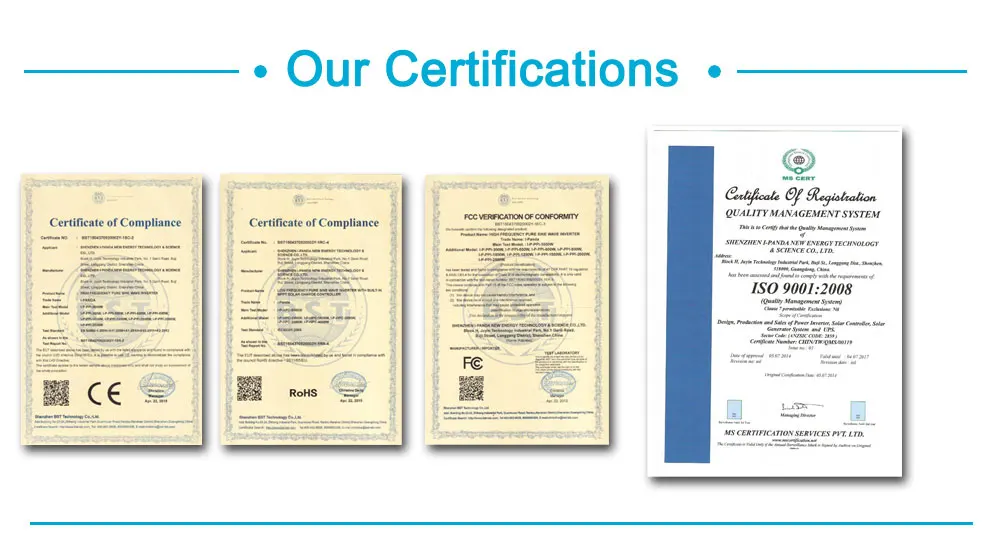
F&Q: |
Q1. How to ensure and monitor the products quality?
A1: We have established a perfect Quality Management System, In strict
accordance with ISO9001: 2008 quality system and ISO14001 environment system for quality assurance management;
Our ISO9001:2008 Quality System certificate encoding: CHIN/TW/QMS/00119;
Our ISO14001 Environment System certificate encoding: CHIN/TW/EMS/00028;
Q2. What is the warranty of products?
A2: The warranty period of different products are different; 5 years, 3 years, 2 years, 1 years; More details please refer to the product specification or manual; we will provide free life-long technical support ;
Q3. What is the difference between MPPT&PWM?
A3. MPPT charging mode, peak efficiency up to 99%, saving 30%~60% solar panel than traditional PWM controller.
- Q: Can a solar controller be used with multiple solar panels?
- Yes, a solar controller can be used with multiple solar panels. The solar controller regulates the amount of charge going into the batteries, and it can handle the combined output of multiple solar panels efficiently.
- Q: How does a solar controller handle short-circuit or overload conditions?
- A solar controller is designed to handle short-circuit or overload conditions in order to protect the solar panel system from damage. When a short-circuit or overload occurs, the solar controller employs various mechanisms to ensure the safety and proper functioning of the system. Firstly, the solar controller typically incorporates a built-in fuse or circuit breaker. This acts as a protective device that interrupts the flow of current when it exceeds a specific threshold. In the event of a short-circuit or overload, the fuse or circuit breaker will automatically trip, effectively cutting off the power supply and preventing further damage to the solar controller and connected equipment. Additionally, a solar controller may utilize advanced electronic circuitry to detect short-circuit or overload conditions. These circuits constantly monitor the current flowing through the system and compare it to predefined limits. If the current exceeds the specified limits, the controller will immediately take action to mitigate the situation. One common approach used by solar controllers is pulse width modulation (PWM) or maximum power point tracking (MPPT). These techniques dynamically adjust the output voltage and current of the solar panel to optimize power transfer while preventing excessive current flow. In case of a short-circuit or overload, the solar controller will adjust the output in real-time to ensure that the current remains within safe limits. Furthermore, modern solar controllers often feature various protection features such as overvoltage protection, reverse polarity protection, and temperature compensation. These additional safeguards further enhance the controller's ability to handle short-circuit or overload conditions by preventing potential issues that could arise from these scenarios. Overall, a solar controller employs a combination of protective devices, electronic circuitry, and advanced control techniques to handle short-circuit or overload conditions. By promptly detecting and responding to these situations, the solar controller ensures the safe and efficient operation of the solar panel system, safeguarding both the equipment and the integrity of the power supply.
- Q: How does a solar controller prevent reverse current flow?
- A solar controller prevents reverse current flow by utilizing diodes that act as one-way valves, allowing current to flow from the solar panel to the battery but not in the opposite direction.
- Q: How do you prevent reverse current flow with a solar controller?
- A solar controller prevents reverse current flow by utilizing a diode in its circuitry. This diode allows current to flow from the solar panels to the battery, but blocks the flow of current in the opposite direction, thus preventing reverse current flow.
- Q: Can a solar controller be used in a solar-powered heating system?
- Yes, a solar controller can be used in a solar-powered heating system. A solar controller regulates the flow of electricity from the solar panels to the heating system, ensuring optimal performance and preventing damage to the system. It helps manage the temperature and power output, allowing the heating system to efficiently utilize the solar energy for heating purposes.
- Q: Solar controller use
- The role of the controller is used to protect the battery from overdischarge. Cloudy charge current is small when there is no boost function
- Q: What is the maximum power rating of a solar controller?
- The maximum power rating of a solar controller typically depends on its specific model and design. However, common solar controllers in the market today range from 10 to 60 amps, with power ratings ranging from 120-720 watts for 12V systems and 240-1440 watts for 24V systems. It's always important to check the specifications of a particular solar controller to determine its maximum power handling capability.
- Q: Can a solar controller be used with different types of solar panel tilt systems?
- Different types of solar panel tilt systems can be used with a solar controller. The purpose of a solar controller is to regulate and control the flow of electricity between the solar panels and the batteries or grid. It is not specific to any particular tilt system. Solar panel tilt systems can vary in terms of the angle at which the panels are tilted, the mechanism used to adjust the tilt angle, and the tracking capabilities. However, the function of the solar controller remains the same regardless of the tilt system. The primary role of the solar controller is to optimize the charging parameters and ensure that the solar panels operate at their maximum efficiency. It achieves this by monitoring the voltage and current produced by the solar panels and making adjustments to the charging parameters accordingly. This allows for efficient charging of batteries or feeding excess electricity back into the grid. Regardless of whether the solar panels have a fixed tilt, manually adjustable tilt, or a sophisticated tracking system, the solar controller can still effectively perform its job. It can adapt to different tilt angles and adjust the charging parameters accordingly to ensure optimal performance. In conclusion, a solar controller can be used with various types of solar panel tilt systems as its design allows it to regulate and control the flow of electricity, regardless of the tilt mechanism used.
- Q: What is the maximum power capacity that a solar controller can handle?
- The specific model and manufacturer determine the maximum power capacity that a solar controller can handle. Solar controllers have the task of regulating the power flow from solar panels to batteries or other loads. They are typically rated in terms of their maximum current handling capacity, which is measured in amps. To calculate the maximum power capacity of a solar controller, multiply the maximum current rating (in amps) by the system voltage (in volts). For instance, if a solar controller has a maximum current rating of 30 amps and the system voltage is 12 volts, the maximum power capacity would be 360 watts (30 amps x 12 volts = 360 watts). It is crucial to select a solar controller that can handle the maximum power capacity of your solar system. Going beyond the maximum power capacity of a solar controller can result in overheating, reduced efficiency, or even damage to the controller. For this reason, it is advisable to refer to the manufacturer's specifications or seek professional advice to ensure that the solar controller is suitable for the power capacity of your specific solar system.
- Q: Which parts are broken, how to repair
- Check the circuit, if the circuit is good, then you have to get the seller to see, because you know where is bad, you no tool material, can not change.
Send your message to us
Best Charge Controllers for Solar:DC 12V/24V/48V Auto Work 20A Solar MPPT Battery Charger Controller
- Loading Port:
- China main port
- Payment Terms:
- TT OR LC
- Min Order Qty:
- 20 unit
- Supply Capability:
- 9999 unit/month
OKorder Service Pledge
OKorder Financial Service
Similar products
Hot products
Hot Searches
Related keywords















